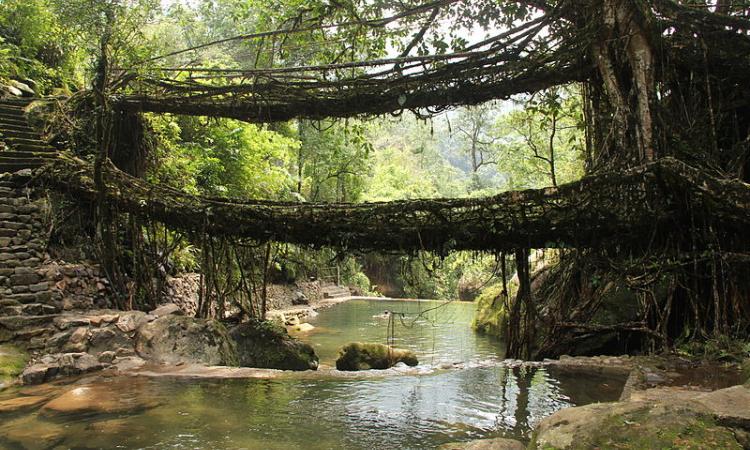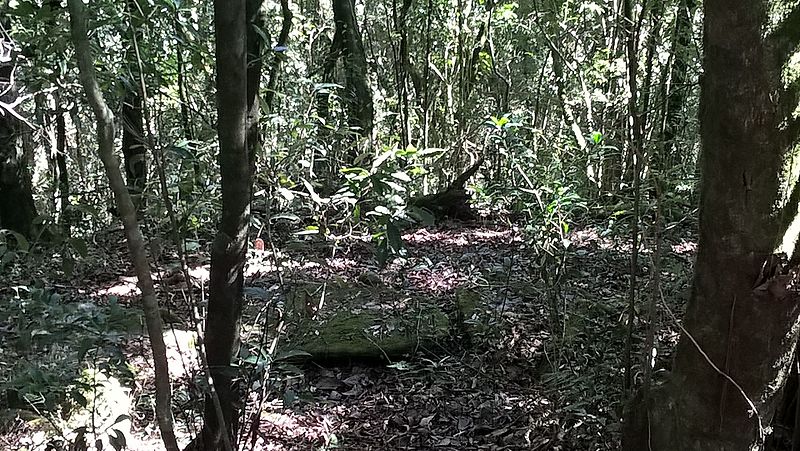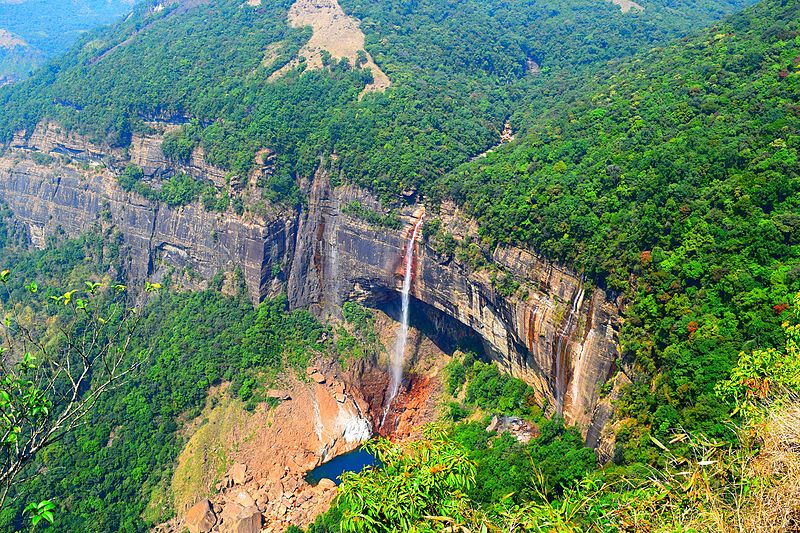
Communities have been adapting to climate variability for centuries, but today their coping mechanisms are being outpaced by the fast-changing climate. In response to global climate change impacts, most countries have focused on ‘hard’ or ‘grey’ infrastructure options such as embankments for flood control or new reservoirs to cope with water shortages.
These options can be costly to build and maintain, and generally do not take the benefits of Ecosystem-based Approaches (EbA) into account.
According to the International Union for Conservation of Nature (IUCN), EbA involves the conservation, sustainable management and restoration of ecosystems as cost-effective solutions that can help people adapt to the impacts of climate change. Examples of such nature-based solutions to climate change include sustainable agriculture, integrated water resource management and sustainable forest management. Harnessing the power of nature can bring in benefits to human communities and natural systems.
WHY EbA?
- It emphasizes water as a socio-economic connector and indicator that interlinks sectors like agriculture, energy, biodiversity through actor-sector synergy and inter-sectoral convergence.
- EbA harnesses biodiversity and ecosystem services to increase resilience and reduce the vulnerability of human communities and natural systems to climate change.
- Healthy ecosystems such as intact forests, wetlands and coastal areas provide many benefits to local communities including firewood, clean water, medicines, shelter and food. They can also form physical barriers against extreme weather events such as cyclones and storm surges.
- EbA restores ecological integrity through effective ecosystem management and contributes to biodiversity conservation and local economies through healthy ecosystems.
- Though primarily an adaptation approach, EbA can also contribute to climate change mitigation by reducing the emissions that transpire from habitat loss and ecosystem degradation.
Ecosystem restoration for COVID recovery
Fast forward to the COVID-19 crisis, and some states are once again using restoration as an engine of employment, especially in rural areas where jobs are badly needed. The strategy not only has the potential to kick start economic growth, it’s also key in the fight against climate change and biodiversity loss.
Reviving nature is at the core of the UN Decade on Ecosystem Restoration, a global push to repair lands lost to development that is set to begin in 2021. But now, we must step up on massive-scale actions to restore our degraded ecosystems.
The case of Meghalaya
India Water Foundation, a non-profit organization is conducting a pilot study for the implementation of EbA in Meghalaya in northeast India. The state is rich in important minerals such as coal and limestone, and has a large forest cover, good soil, is biodiversity-rich and has abundant water bodies.

However, unsustainable agricultural practices and non-scientific mining has affected the soil, biodiversity and water quality, and has heightened environmental degradation. Practices like deforestation, traditional jhum cultivation etc. have drastically affected the hydrological parameters.
Swamps, marshes, and other wetlands are increasingly being reclaimed for urban and agricultural expansion. Unsustainable resource utilization led to pushing back the boundaries of forests and turning clear streams into muddy water resulting in water stress and declining water storage capacities.
Meghalaya lies in the vicinity of Bangladesh, Nepal and Bhutan and is vulnerable to water-induced disasters because of its fragile geo-environmental setting and economic underdevelopment. This poses a considerable threat to these countries as well.
Communities are unable to cope with the problems effectively due to low capabilities and weak institutions. Inability to diversify to other livelihood activities leads to migration. There is a lack of access to adequate resources to enable the community to recover from climate shocks.
Meghalaya’s economy is closely tied to natural-resource-based and climate-sensitive sectors such as agriculture, water and forestry. Encroachment of forest land for agricultural activity, overexploitation of biodiversity, unsustainable agricultural practices and non-scientific mining resulted in habitat degradation. Human settlement and unplanned infrastructure development have resulted in habitat loss and pollution.
Piece-meal approaches to water, energy or biodiversity resulted in sectoral solutions and lacked cross-cutting outcomes with its inter-connected sectors. India Water Foundation (IWF) partnered with the Meghalaya Basin Development Authority (MBDA), Government of Meghalaya and the Integrated Basin Development Livelihood Programme (IBDLP) was launched in 2012.

The IBDLP programme is designed around four pillars – knowledge management, natural resource management, entrepreneurship development and good governance. It is being implemented in a mission mode through over two dozen missions. Every mission is designed to leverage the comparative advantage that Meghalaya has and generates livelihood opportunities.
The problems identified and tackled under this project were: risks emanating from water-induced and environment-induced vagaries in terms of insecurity of water, food and energy sectors, floods, drought, water and air pollution, erosion of land, loss of biodiversity, deforestation and loss of livelihoods.
The basic strategies revolved around enhancing development from the periphery to mainstream through an area-wise basin approach rather than department centric approach.
Water was a socio-economic asset to tackle vagaries of climate change and socio-economic development indicators that facilitated interconnectedness with sectors such as agriculture, energy, environment, etc.; connected policy areas, economic sectors and societies; tools for cooperation and building trust along with livelihoods of the native people.
The EbA approach was implemented, which sought to promote societal resilience via ecosystem management and conservation and recognises the centrality of ecosystems in the adaptation process.
IWF has embarked on various competence and capacity building programmes of all stakeholders in harnessing EbA in managing water and other natural resources in Meghalaya. These training programmes have been carried out as part of the Meghalaya government’s flagship programme.
Through coordination with agencies like MBDA, JICA, GIZ, IFAD, World Bank, development partners, state departments, like-minded civil society organisations and communities, IWF facilitated convergence so that cross-cutting partnerships are promoted alongside community-led initiatives.
Impacts on human well being
- Addresses crucial links between climate change, biodiversity, ecosystem services and sustainable resource management
- Clear linkages between water and human development and impacts on people’s lives and livelihood
- Smart ambassadors
- Delivered environmental benefits towards holistic ecosystem services
The key inputs resulted in creating alternative water-related livelihoods for the native community, which was successful in addressing unemployment, insurgency, mining, migration, reducing poverty, enhancing gender mainstream and enhanced socio-economic-environmental indicators of the state.
The key inputs towards the implementation of the environment-plus initiative blending Integrated Water Resources Management (IWRM), water-energy-food nexus and EbA for management of natural resources in Meghalaya in a holistic manner has helped in creating a ‘Brand Meghalaya’.
EbA brought into practice in Meghalaya by IWF has enabled the local communities to garner multiple benefits accruing from the restoration of man-made wetlands, forest conservation and sustainable forest management that have helped in carbon sequestration, improved water quality, reducing risks from natural hazards, biodiversity conservation, improvement in alternative livelihoods and poverty alleviation.
Besides, it has also helped in realizing specific Sustainable Development Goals (SDGs), specifically of improved livelihoods in terms of SDG-1, increased water, energy and food security in terms of SDGs 2, 6, 7, enhanced climate change resilience in terms of SDG13 and augmented biodiversity conservation and eco-services in terms of SDG-13 and 15.
In Meghalaya, sacred groves are proving to be a shining example of traditional forest management. These traditional cultural practices serve as water catchments. Water conservation is perhaps the most well-documented ecological service provided by sacred groves. Tribes in Meghalaya used bamboo drip irrigation to bring water to seasonal crops and successfully prevented wastage and increased crop yield with less water.
Strategies of appropriate sanitation have made Mawlynnong in Meghalaya the ‘cleanest village in Asia’. EbA has met success in Meghalaya and in neighbouring countries such as Bangladesh, Nepal and Bhutan, which adopted it in their national policies. Transversality approach is customized in another northeastern state of Sikkim and the under-developed aspirational states of India.
Stumbling blocks
Restoration efforts are likely to fail if the sources of degradation persist. Therefore, it is essential to identify the causes of degradation and eliminate or remediate ongoing stresses wherever possible.
There was a limitation in terms of environmental financing, institutional convergence, lack of integration of horizontal and vertical development sectors. The state prospered with the double-digit economy but to bring visible impact at the grassroots due to lack of effective awareness & regular capacity-building efforts, it took nearly ten years for the model to succeed.
Since EbA addresses the crucial links between climate change, biodiversity and sustainable resource management, it is imperative that effective mitigation and adaptation strategies needed focus on ecosystem restoration as part of an explicit response to climate change.
Dr Arvind Kumar, an environmentalist is the President of India Water Foundation. As a member of World Water Council’s Taskforce on Transversality, he presents key strategies for water security, mainstreaming of water-related agendas and shares practices in various policy initiatives of World Water Council.